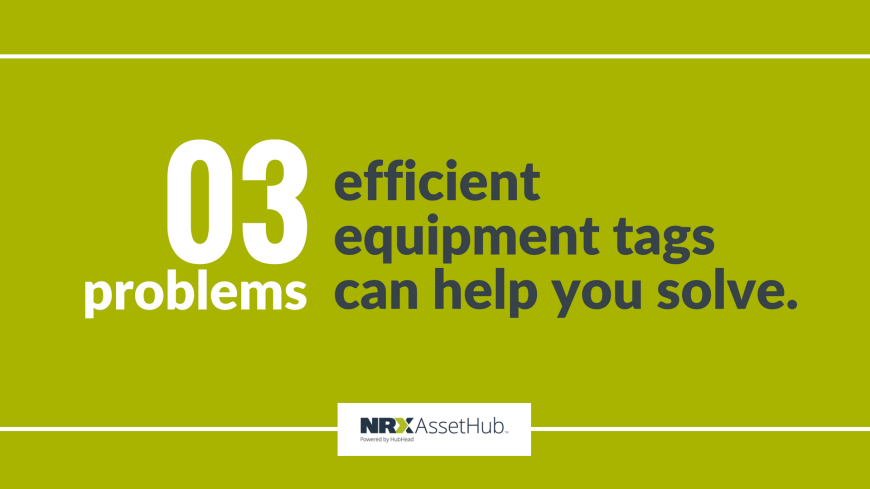When companies have hundreds or even thousands of physical assets, it’s important to know their operating condition and where they are located. Identifying, tracking and controlling assets with efficient equipment tags is critical to a company’s bottom line. Assets are frequently out for use, undergoing repairs, sold, updated, or removed. From purchase to disposal and all the steps in between, an asset’s history should be easily traced and reviewed using an asset management system.
3 problems efficient equipment tags can help you solve.
- Mismanaging physical assets
This is the most critical use of asset tracking solutions. Equipment tags are used to monitor physical assets as they move throughout the organization but if assets are being misplaced then there’s room for improvement. Effective equipment tag solutions allow businesses to gain a better view of the company’s complete physical asset portfolio, more easily identify needs, and eliminate wasteful time searching for assets.
- Inefficient maintenance management
For companies that manage assets requiring periodic or ongoing maintenance, asset tracking solutions are a lifeline. Too often, maintenance management is a process that falls behind when companies rely on manual documentation to keep maintenance schedules on track. With proper labeling of equipment tags, all assets can be streamlined to efficiently work in one complete system rather than multiple incomplete systems. This leads to efficient and accurate inventory management while eliminating many of the headaches typically associated with inventory control.
- No regulatory management and compliance
More and more, asset tags are serving in heavily regulated industries. Thus, these companies must be equipped with efficient processes to capture and report data to prove compliance. Not only does asset tracking enable businesses to stay on top of regulatory requirements such as equipment testing, calibration, and maintenance. Tags can also completely streamline reporting requirements. However, without proper labeling of equipment tags, the process may be an even greater challenge.
There are many more benefits to using asset tags that increase productivity levels and save time. Allowing businesses to make more informed decisions regarding physical inventory, such as when to repair or replace items. Tracking assets and collecting data using efficient equipment tags have proven to be faster and more accurate. Thereby, avoiding costly errors and reducing equipment tag management costs by up to 80%.
How NRX AssetHub Can Help
Asset-intensive companies use NRX AssetHub to load all their existing tags from their EAM system. Including any tag allocation information from their manual systems, such as spreadsheets or databases. Then, they capture their site-specific naming requirements in a simple-to-use, browser-based form. The form lets them quickly build equipment tags from drop-down lists of codes and prevents costly tagging errors. To learn more about how efficient equipment tags can help businesses check out our tip sheet or get in touch!
Share this article

